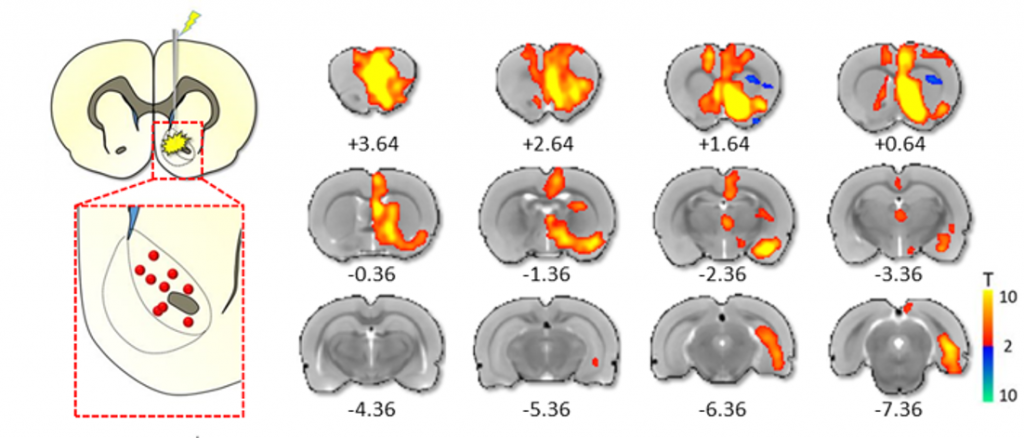
This Phase I SBIR develops and tests a Deep Brain Stimulation Probe Insertion System Utilizing Ultrasonic Vibration for Less Invasive Implantation with Improved Targeting Accuracy for Addiction Therapy. This submission is in response to: RFA –19-019 HEAL Initiative: America’s Startups and Small Businesses Build Technologies to Stop the Opioid Crisis. Problem to be solved: Currently, drug addiction is a major public health concern. In the U.S., more than 7 million people suffer from some type of illicit drug disorder. Due to success treating Parkinson’s and neuropsychiatric disorders with Deep Brain Stimulation (DBS), it is being investigated as a potential drug addiction treatment. The rationale behind addiction stimulation therapy involves reestablishing normal brain function in target regions in an effort to dampen addictive behaviors. Targeting the Nucleus Accumbens (NA), a key structure in the mesolimbic reward pathway, has demonstrated success preclinically as well as with human subjects (outside the U.S.). DBS probe placement requires metal guide tube placement to mechanically support and maintain trajectory during insertion. Placement also requires dura resection (durotomy), which can cause brain shifts relative to the skull resulting from cerebrospinal fluid (CSF) loss and/or subdural air invasion, decreasing accuracy of pre-surgical mapping. This project develops the Accurate DBS Placement (ADP) system to oscillate DBS probes during insertion, allowing thinner/more flexible probes to be placed precisely into deep neural structures, with smaller, more shallowly inserted guide tubes, or without requiring them at all. Controlled insertion through the dura will be evaluated, which would minimize brain shifting. Product and Long-Term Goal. The ultimate goal is to standardize/simplify the DBS procedure, making it a more successful and attractive addiction treatment, enabling use in a wider range of surgical centers. The product for sale – the ADP system – would be an insertion system that clinics purchase to deliver the therapy. Additional markets exist for placing DBS electrodes for Parkinson’s disease. Initial sales will be to preclinical researchers. Phase I Hypothesis and Aims. Hypothesis: The ADP System can enable improved DBS probe placement accuracy with reduced overall surgical invasiveness. Aim 1: Develop and test the ADP system for placement of multiple DBS probe styles: investigate dura and guide tube placement options. Acceptance Criteria. >70% reduction in insertion force compared to non-vibrated insertion in models and/or ex vivo tissue; at up 10 cm insertion depth, demonstrate <1 mm deviation from target path with 50% reduction in implantation footprint. Aim 2: Demonstrate ADP system improves insertion reliability and accuracy of polymer-based MR- compatible and flexible DBS probes into the Nucleus Accumbens (NA) in preclinical study. Acceptance Criteria: Improved insertion success and accuracy demonstrated with the placement of ‘UNC probes’ (research partner) into NA, verified by Magnetic Resonance Imaging (MRI) and electrophysiology recording.
